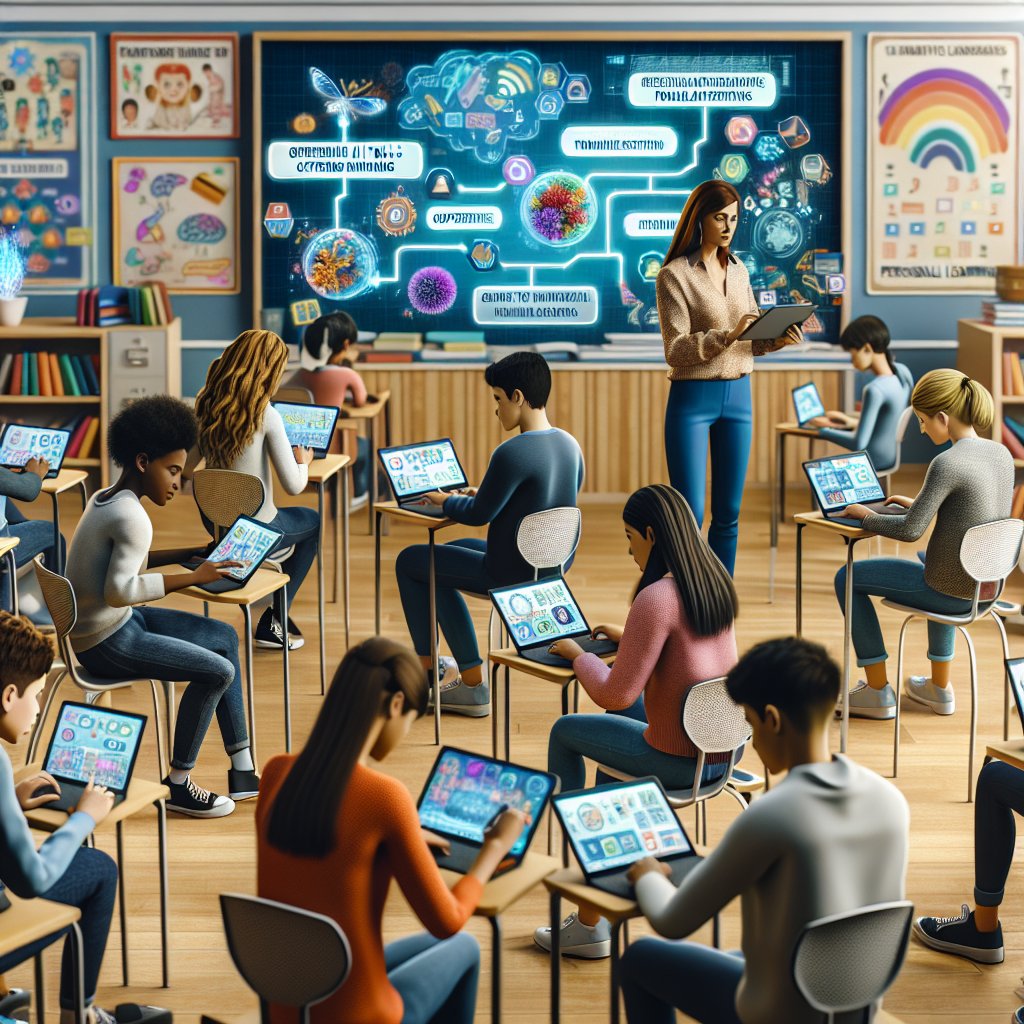Unlocking the Future of Learning: How Generative AI is Revolutionizing Formative Assessment
In the evolving landscape of education, the role of formative assessment cannot be overstated. As teachers adapt to increasingly diverse classrooms, the need for real-time feedback that shapes learning is more crucial than ever. Enter Generative AI. In this exciting exploration, we’ll dive into how this technology—especially large language models like ChatGPT—is changing the game for educators and students alike.
What Exactly Is Formative Assessment?
To kick things off, let’s clarify what we mean by formative assessment. Unlike summative assessments (think final exams or end-of-term projects), formative assessment is all about ongoing insights. It helps teachers and students identify where learners currently stand, where they need to go, and how to get there. Picture it like a GPS for academics, guiding students through their educational journeys with timely feedback and support.
Why Generative AI?
As educational technologies evolve, so does the conversation around how we can use them effectively. Generative AI isn’t just a buzzword; it represents a significant shift in how we can scale formative assessments. While traditional methods can be labor-intensive and overwhelming for teachers—especially with large classes—AI offers tools to streamline and enhance this process.
Imagine being able to automatically generate personalized feedback or customized quizzes in real-time! Generative AI can help us achieve this and so much more.
The Power of Large Language Models (LLMs)
Large language models (LLMs) like ChatGPT have shown remarkable capabilities in generating coherent, context-sensitive text. Here’s how they can fit into our formative assessment framework:
1. Clarifying Learning Goals: Where Are We Going?
One of the foundational aspects of formative assessment is clarity around learning objectives. LLMs can simplify complicated academic jargon, transforming dense curriculum goals into understandable language for students.
For example, if a learning objective states, “Understand the molecular basis of genetic inheritance, including the structure and function of DNA, RNA, and the process of protein synthesis,” an LLM could rephrase this to “By the end of this lesson, you’ll be able to explain how traits are passed from parents to kids and how DNA works to build proteins.”
Why is this important? When students understand what’s expected of them in a relatable way, they are better equipped to self-monitor their progress—a crucial step for effective learning.
2. Understanding the Current Learner Position: Where Are We Now?
Next up, we need to assess where our learners currently are. Formative assessments should be about acquiring information that informs instruction. LLMs shine here too. They can assist in automatically generating diagnostic questions or even quizzes tailored to specific learning objectives or student needs.
For instance, using AI to generate multiple-choice questions (MCQs) allows educators to customize assessments that are relevant to both the material and the learners’ experiences. Immediate feedback from these assessments can offer insights into students’ understanding and misconceptions directly within the learning cycle.
3. Moving Learning Forward: How Do We Keep Advancing?
Finally, the goal is to bridge the gap between where the students are and where they need to be. LLMs can provide task-level feedback (addressing correctness) as well as more complex process-level feedback (guiding students on how to tackle assignments).
Instead of merely pointing out what’s wrong in a student’s work, feedback generated via AI can include insights about why a misunderstanding might have occurred and offer strategies on how to overcome it. This type of positive commentary encourages deeper learning and self-reflection.
Challenges and Considerations
While integrating generative AI into formative assessments is promising, it’s essential to approach this technology with a critical eye. LLMs may produce inaccurate or generic feedback, requiring educators to maintain oversight on the quality of AI-generated content.
Teachers must also consider the potential overreliance on AI. Striking the right balance is crucial; the aim is to complement the teacher’s expertise instead of replacing it.
Practical Guidelines for Educators
To help educators effectively integrate LLMs into their assessments, here are some practical guidelines:
- Use clear and context-rich prompts: The quality of output from LLMs heavily relies on the input. Providing specific, contextual prompts will yield better, tailored responses.
- Iterate and refine: Just like student learning, using AI tools effectively may require ongoing adjustments. Experiment with different prompting techniques, and learn what resonates best with your teaching style and student needs.
Key Takeaways
- Formative assessment is a powerful tool for enhancing student learning through real-time feedback.
- Generative AI, especially LLMs, can automate and enrich this process by generating engaging assessments, clarifying goals, and providing insightful feedback.
- Teachers are encouraged to remain involved, ensuring they leverage AI's capabilities thoughtfully while maintaining the human element of education.
The Future Is Now
As we embrace the capabilities of AI in educational settings, the possibilities feel endless. By utilizing generative AI thoughtfully, educators can pave the way for more personalized, engaging, and effective learning experiences. So, let’s gear up our classrooms for this exciting future, empowering both teachers and students to thrive in AI-enhanced educational environments!

